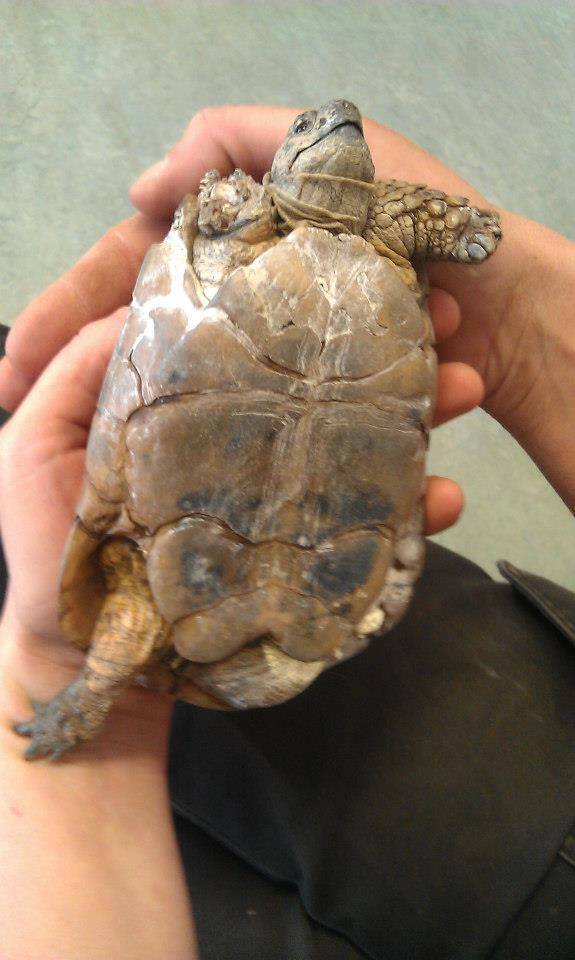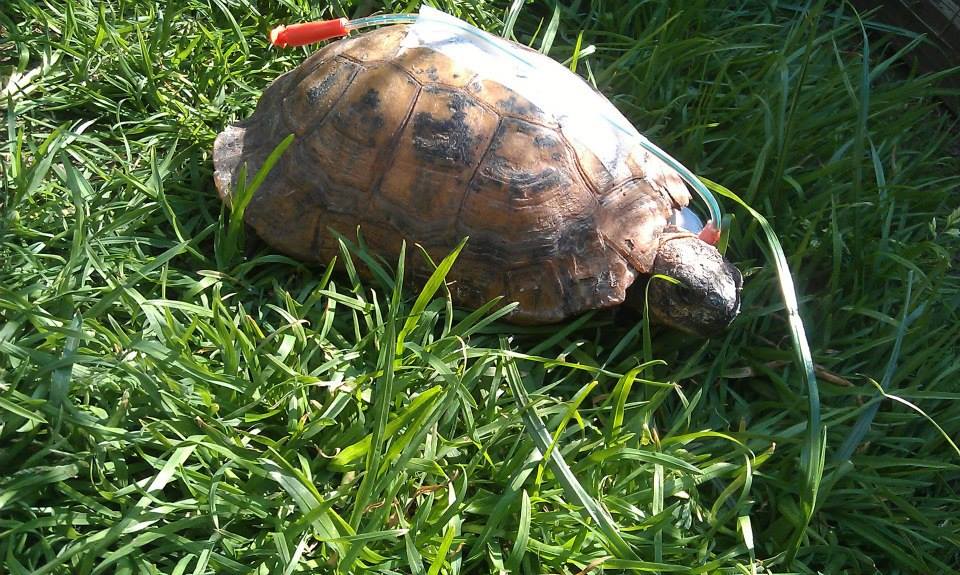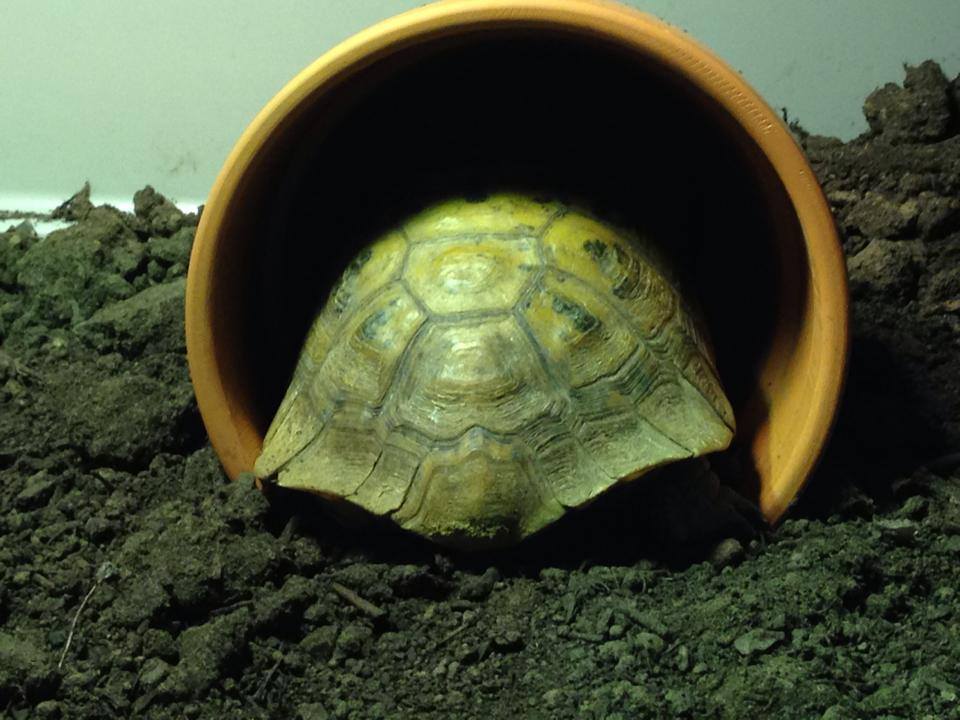May 2013 is a time I will never forget.
We received a call from a very concerned member of the public who had found, what she thought was a terrapin, in her garden that had been attacked by another animal. She told us it was injured and had been turned away from other rescues who told her it didn’t have a chance as it was injured it would cost too much to treat. We couldn’t turn this ‘terrapin’ away, so arranged transport to get it to us.
What would we find?
On arrival, the terrapin turned out to be a tortoise who was in a horrendous way. Two of his legs had been ripped off, showing exposed bone and there were maggots crawling on his open wounds. Unsurprisingly, he was very weak and cold. His claws were worn away, and his shell had scratch marks on it from where something had tried to get to him. The most surprising thing was these wounds were not fresh, and his body had even tried to heal itself.
He was rushed to our local vets, where they removed all the fly eggs and maggots they could and kept him in an incubator, as by this time our exotic vet had closed for the day. He was also given painkillers and antibiotics to see him over to the next day. Had he had been a mammal, he wouldn’t have survived for this long. Reptiles are very different to mammals and everything happens much slower, which is why this little disabled tortoise was still alive.

Can the disabled tortoise be helped?
He was then transferred to our exotics vet for surgery the next day. He had gangrene which needed urgent attention, as well as bone exposed from where his legs had been ripped off and there were still maggots present. You would think he would have been quiet with all these injuries, but he was clambering around his carrier the whole way to the vets, trying to escape. It was a very worrying time, as chances were slim that Gordon (as I named him) would make it.
We were then warned that there was a high chance he wouldn’t survive. This is because when the maggots hatch, they will feed on the dead tissue. Once they have eaten all the necrotic tissue they move onto the living tissues and into the animal’s internal organs. The gangrene was a danger as if it had spread to far, it would have affected his organs and caused them to rot. We decided that every animal deserves a chance and we couldn’t have him put down without at least trying, even though it was going to be very expensive with a poor prognosis.
After 6 hours of surgery, we got the call to say Gordon was waking up. He was a very lucky boy as the gangrene was millimetres from his vital organs. He had the exposed bone removed, his stumps stitched up, and a feeding tube fitted. I offered to fostered Gordon, and fell in love with this little fighter. He needed a lot of care, but I was just happy he was alive. He really did beat the odds and rallied around.

Luckily for Gordon, whatever had attacked him took off two of his legs on opposite sides so he was able to walk. He was actually very quick when he got stronger and used to walking a bit differently. We did think about getting him wheels, but our vet said this is only necessary if he struggled to walk as he wouldn’t be able to lie flat to rest properly.

Eventually, his feeding tube was removed and he began eating on his own. I remember the first time he took his first bite of real food, I could have cried with joy. He just didn’t give up. Every day he was stronger, active and more eager to eat. By this point, I was completely in love with this little shelled warrior – I couldn’t rehome him, he was meant to stay with me. Gordon loved going outside – he even tried to dig with his stump and got a muddy face. He really seemed to be enjoying life, and we were so pleased that he came to us so he could have this chance. I was a little worried that a disabled tortoise wouldn’t have a good quality of life, but he really proved me wrong!
He had frequent baths, where he would drink so much water. Although these shelled warriors should be bathed in warm water to allow them to drink, and it also helps them poop. However, the volume of water he drank concerned me. The vet said it was hard to estimate his age, and he was between 50-100 years of age (It was hard to pinpoint it any further than this). Sadly, it turned out Gordon had kidney failure which the vet said he probably had for a long time. I had two wonderful years with Gordon but sadly, he passed away at home. He was loved, and I will never forget him. He left a big hole in my heart when he left, but I have many happy memories of that little disabled tortoise.
If you liked Gordon, perhaps you would like to meet Gremlin the Pacman frog?


This is so beautiful. What a wonderful thing u did. U will never forget him.what a special thing to have. There should be more people like u in the world. Thank you.